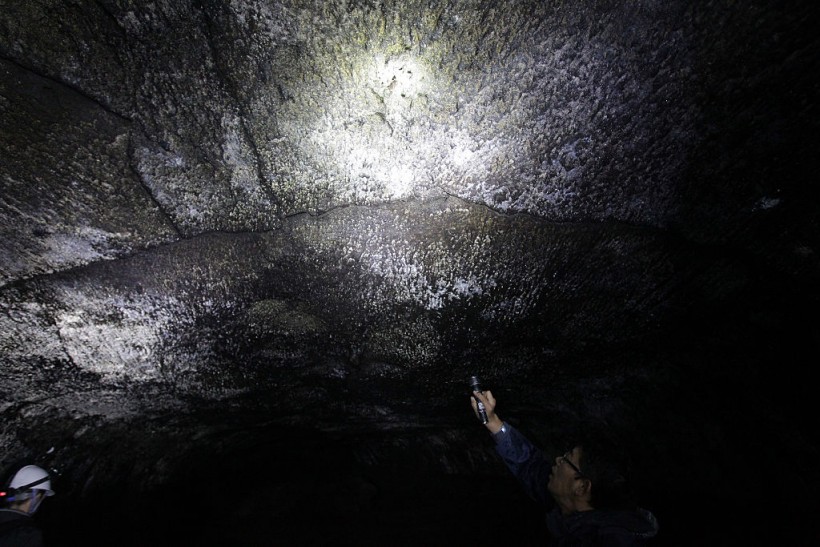(Photo : Photo by Chung Sung-Jun/Getty Images)
Microscopic organisms are the tiniest recognized biological things on the planet, and they may be detected almost anywhere, including the chilly, Mars-like temperatures of basaltic tunnels.
Mysterious Life Forms in Hawaii's Ancient Lava Caves
Researchers have discovered a fascinating array of unique bacteria surviving in geothermal tunnels, columnar basalt, or volcanic plumes on the Hawaiian archipelago of Hawaii.
These subterranean constructions, which date back between 65 and 800 years, absorb almost no sunshine. They could potentially be a source of harmful materials and fumes. Bacterial matting, on the other hand, are a typical component of Hawaiian lava tunnels, as per Science Alert.
Tests gathered from these mats between 2006 and 2009, and thereafter during 2017 and 2019, indicate far more unusual organisms than predicted.
When scientists analyzed 70 data for a specific RNA gene, which is typically applied to determine microbiological species richness, they were unable to connect any of the findings to recognized taxa with strong certainty, The New York Times reported.
Following vegetation, microorganisms comprise the majority of the planet's biodiversity and virtually all of the biomass in the underground caverns. Experts have previously ignored these creatures as they're so little and survive in these kinds of harsh conditions.
Subterranean bacteria have attracted increased attention in previous times due to their existence in circumstances extremely closely resemble on Mars. However, there is still a considerable distance to get there.
According to latest numbers from PNAS, 99.999% of all microbiota organisms are unidentified, prompting a few to label them as subatomic particles. The latest Hawai'i study emphasizes how enigmatic these living organisms are.
The richness of the places varies. Extremely diversified microbial communities were found in ancient lava tubes, those around 500 and 800 years old, then in geothermically populated places or others less than 400 years old.
While the earlier sampling locations were far more varied, the younger and more dynamic collection variable shows highly complicated microbial relationships, which was probably related to the reduced variety. To live, the bacteria may have to collaborate.
Also read: Climate Change: Australia's Environment Faces a Deteriorating State
Ancient Lava Caves
Scientists, as per lcsciences, believe that microscopic organisms take time to repopulate volcanic silicate minerals, and as their conditions modify, so does their community structure. Proteobacteria and Actinobacteria, for example, are more common in relatively cool tunnels.
Organisms in newer lava caverns were more distantly connected. This shows that rivalry is a larger factor in severe conditions, reducing the likelihood of highly connected organisms coexisting.
Numerous bacterial groups, such as Chloroflexi and Acidobacteria, were found in virtually all locations, irrespective of age. These bacteria appear to be important members of their populations. The scientists refer to them as hub organisms because they draw along unrelated microorganisms, as shown in the recent report from Frontiers in Microbiology.
Chloroflexi microorganisms may supply carbon sources in the environment by capturing visible light in darkly colored settings.
However, for the time being, it is just conjecture. Experts can't identify what a specific microbe's purpose is in their subterranean colony since just a genetic material was substantially decoded in the research. Thus, the work highlights the need of studying bacteria in co-culture instead of cultivating them separately (as isolates).
Related article: Researchers Predict That Larger Fish Species Suffers From Oxygen Deficiency Due to Global Warming and Human Activities
© 2024 NatureWorldNews.com All rights reserved. Do not reproduce without permission.




![Climate Change is Reducing Dust Levels Worldwide as Arctic Temperature Warms [Study]](https://1471793142.rsc.cdn77.org/data/thumbs/full/70320/280/157/50/40/climate-change-is-reducing-dust-levels-worldwide-as-arctic-temperature-warms-study.jpg)

